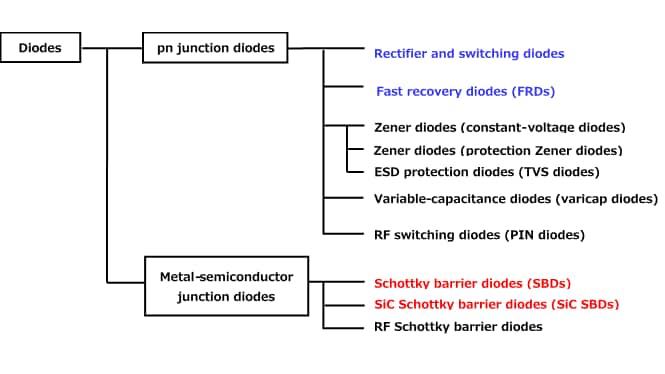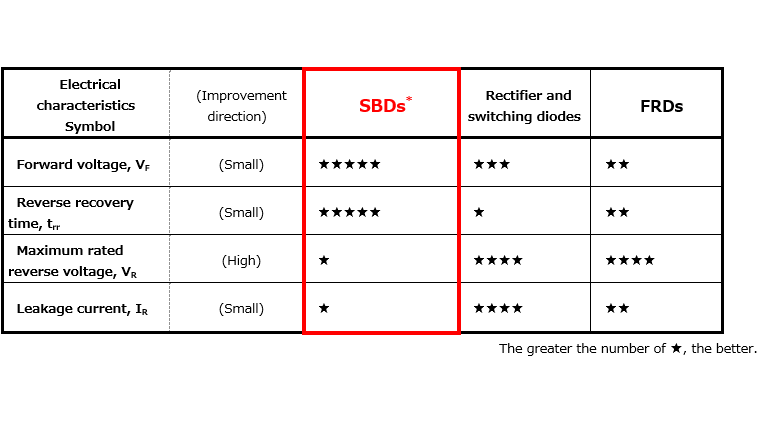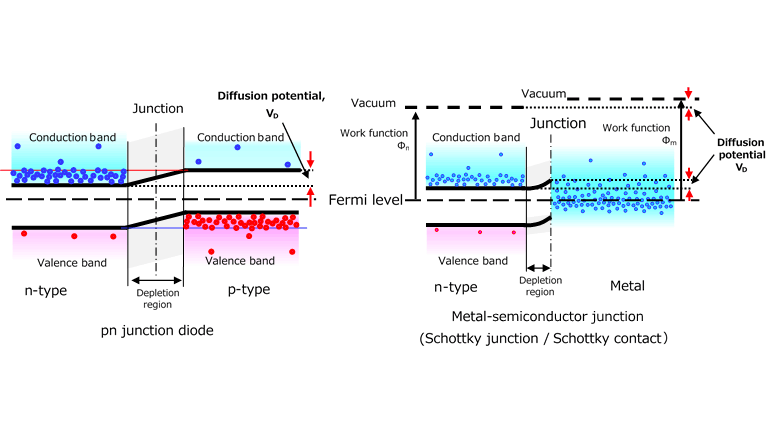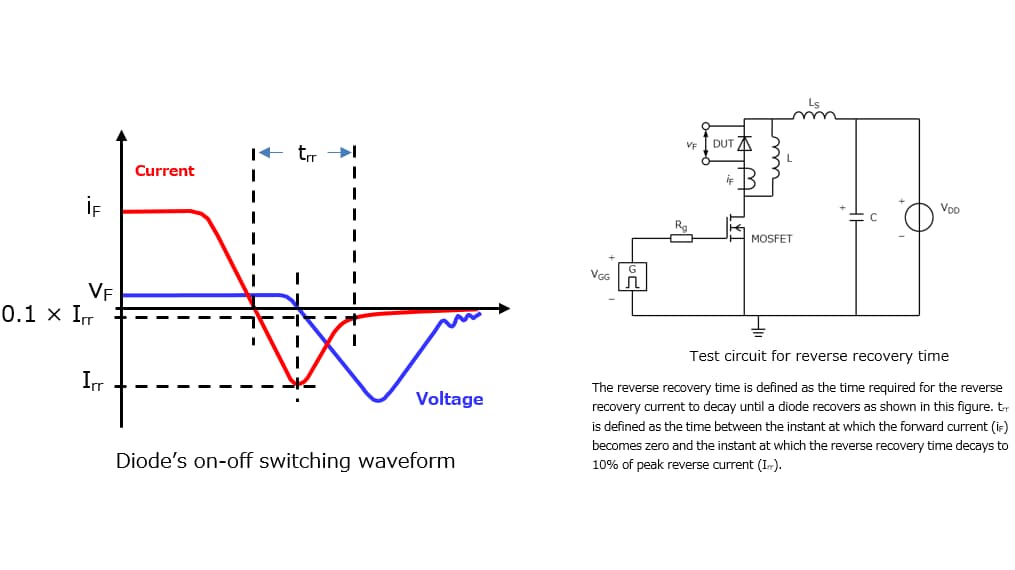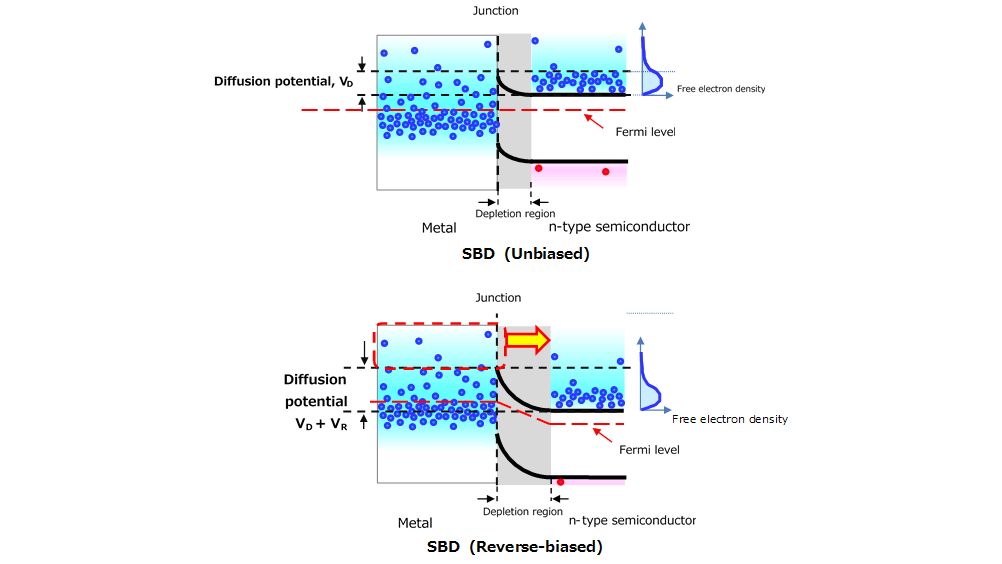- General Top
- SEMICONDUCTOR
- STORAGE
- COMPANY
-
My ToshibaSemicon
- Semiconductor Top
-
ApplicationsAutomotive
Body Electronics
xEV
In-Vehicle Infotainment
Advanced Driver-Assistance Systems (ADAS)
Chassis
IndustrialInfrastructure
BEMS/HEMS
Factory Automation
Commercial Equipment
Consumer/PersonalIoT Equipment
Healthcare
Wearable Device
Mobile
Computer Peripherals
-
ProductsAutomotive Devices
Discrete Semiconductor
Diodes
Transistors
Logic ICs
Analog Devices
Digital Devices
Wireless Devices
※
: Products list (parametric search)
Power SemiconductorsSiC Power Devices
※
: Products list (parametric search)
Isolators/Solid State RelaysPhotocouplers
Digital Isolators
Solid State Relays
Fiber Optic Transmitting Modules
※
: Products list (parametric search)
MOSFETsIGBTs/IEGTsBipolar Transistors※
: Products list (parametric search)
Diodes※
: Products list (parametric search)
MicrocontrollersMotor Driver ICsIntelligent Power ICs※
: Products list (parametric search)
Power Management ICsLinear ICs※
: Products list (parametric search)
General Purpose Logic ICsLinear Image SensorsOther Product ICsOther Product ICs
※
: Products list (parametric search)
-
Design & Development
-
Knowledge
- Where To Buy
- Part Number & Keyword Search
- Cross Reference Search
- Parametric Search
- Stock Check & Purchase
This webpage doesn't work with Internet Explorer. Please use the latest version of Google Chrome, Microsoft Edge, Mozilla Firefox or Safari.
require 3 characters or more. Search for multiple part numbers fromhere.
The information presented in this cross reference is based on TOSHIBA's selection criteria and should be treated as a suggestion only. Please carefully review the latest versions of all relevant information on the TOSHIBA products, including without limitation data sheets and validate all operating parameters of the TOSHIBA products to ensure that the suggested TOSHIBA products are truly compatible with your design and application.Please note that this cross reference is based on TOSHIBA's estimate of compatibility with other manufacturers' products, based on other manufacturers' published data, at the time the data was collected.TOSHIBA is not responsible for any incorrect or incomplete information. Information is subject to change at any time without notice.
require 3 characters or more.
3-6. Maximum rated reverse voltage (VR)
VR is the maximum rated reverse voltage that can be applied across an SBD.
When an SBD is reverse-biased, it is applied across the depletion region that extends from the junction into the semiconductor. The width of the depletion region depends on the dopant concentration; the higher the dopant concentration, the narrower the depletion region. Increasing or decreasing the reverse bias causes the depletion region to expand or shrink.
Figure 3-10 shows the relationship between the depletion region width and the electric field. The area of the triangle formed by the depletion region width and the electric field represents the reverse bias voltage applied.
As the reverse bias is increased, the electric field increases. When the electric field exceeds a certain value (the maximum electric breakdown field of silicon), an SBD is destroyed by the resulting excessive current. VR is defined as the maximum reverse bias that does not cause the electric breakdown field to be exceeded.
Therefore, the less heavily an SBD is doped, the higher its rated VR.
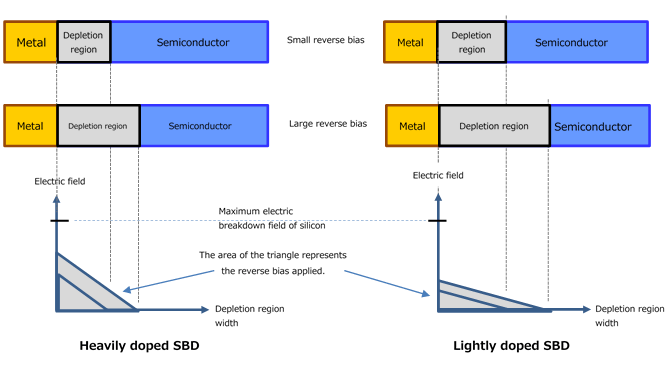
The dopant concentration also affects the series resistance of a diode directly. The more heavily doped a diode is, the smaller its series resistance becomes. In the case of pn junction diodes, excessive carriers due to the conductivity modulation effect described above reduce the effect of the dopant concentration. However, SBDs do not have the conductivity modulation effect since they are unipolar devices.
Figure 3-11 compares the IF-VF curves of the SBDs with a VR of 30 V and 40 V. (CBS10S30 and CBS10S40). In the low-current region, both the CBS10S30 and CBS10S40 exhibit the same IF-VF curve. As the forward current approaches the maximum rated current (1 A), the CBS10S40 with a higher VR conducts less forward current than the CBS10S30 at the same forward voltage.
This is because the CBS10S40 is less heavily doped and thus has a higher series resistance than the CBS10S30. This tendency becomes more marked as the VR is increased. It is therefore difficult to increase the maximum rated reverse voltage (VR) of silicon SBDs.
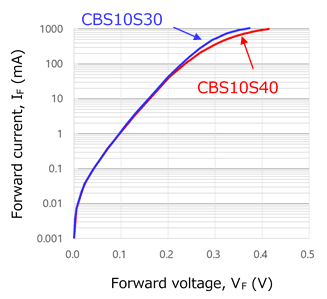
Chapter3 Basics of Schottky Barrier Diodes
Related information
- Products
Schottky Barrier Diodes - Application Notes
Application Notes - FAQs
Diodes - Parametric Search
Schottky Barrier Diodes - Stock Check & Purchase
Stock Check & Purchase


